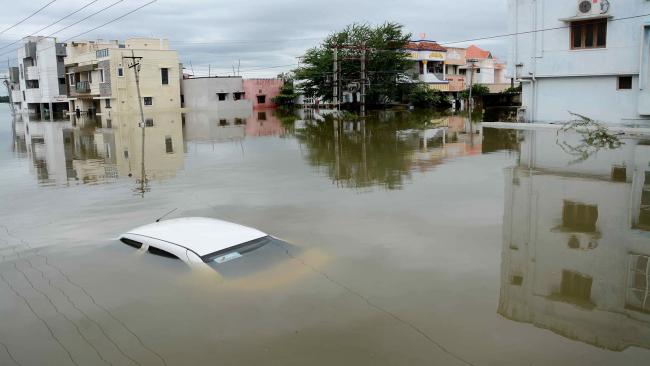Most Smart Cities In India Prone To Floods: Disaster Report

New Delhi: As much as 56 per cent of smart cities are prone to floods which are responsible for 77 per cent of all disasters in India, a report said on Friday.
The report, based on disaster data between 2000 and 2017, observed that India has a mean of 11 flood events per district over the last 18 years.
Following floods, other disaster share was cyclone (22 per cent), extreme temperature (11 per cent), landslides (seven per cent) and earthquakes (four per cent). Drought, however, was only one per cent of all disasters. "Ninety-eight per cent of India's 642 districts have received at least one flood event," stated the joint report 'Decoding the Monsoon Floods' by NGO SEEDS and Centre for Research on the Epidemiology of Disasters (CRED) based in the University of Louvain School of Public Health, Brussels.
It said that floods affect over 15 million people every year. Of 15.6 million people affected by floods in India in 2017, over 316,185 were people with disabilities.
"More than 2,200 cities and towns in India are located in districts which have witnessed at least 11 floods in the last 18 years," the report said. Further signifying the scale of infrastructure that needs to be secured against the future risks, the findings said that 56 per cent of India's planned smart cities fall in districts reporting a high number of flood events.
Also Read: Heavy Rain Lashes Chennai, Flash Floods Bring Life To Grinding Halt
Since 2000, India has faced 215 flooding events both from floods and cyclones. This accounts for 77 per cent of all disaster events.
"Assam is the most flood-prone state, with areas like Lakhimpur reporting over 30 flood events within this period. Even known drought-prone areas of Gujarat and Rajasthan have witnessed more floods than the country's average in the last 18 years," said Anshu Sharma, Co-founder and Mentor, SEEDS. "Unpredictability, urbanisation and invisibility of flood risk are major concerns that need to be addressed urgently," Sharma added.
Citing the 2015 Chennai floods in Tamil Nadu, the report pointed out how the natural sinks like wetlands, that act as a sponge against floods, had shrunk due to rapid urbanisation, leading to catastrophic results.
"Estimates put the remaining original wetlands of Chennai at just 10 per cent." "Concrete encroachment on Cooum River, Adyar River and Buckingham Canal which serve as the main rainwater drains, poorly designed drainage systems and ageing civil infrastructure added to the problem," the report said.
Debarati Guha-Sapir, Director, CRED, said: "We are witnessing a disturbing trend of a large number of climate induced disasters... The launch of this regional report is a huge step towards better understanding of local nuances of disaster events."
Suggesting preparations for the 2018 monsoon and cyclone seasons at policy and community levels, the report said that with a scale this huge, informal nature of the losses and limited resources, coping practices at the community level are very beneficial.
IANS




